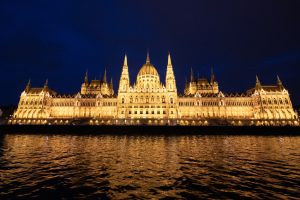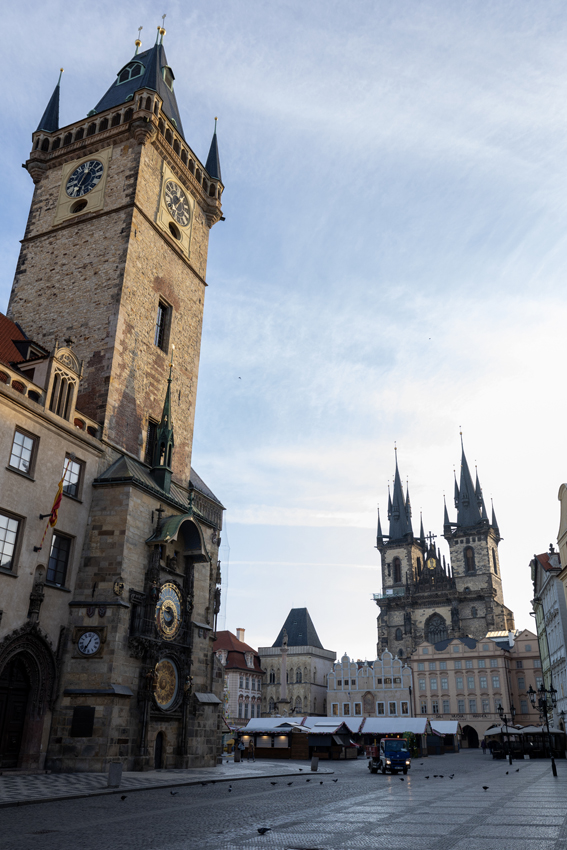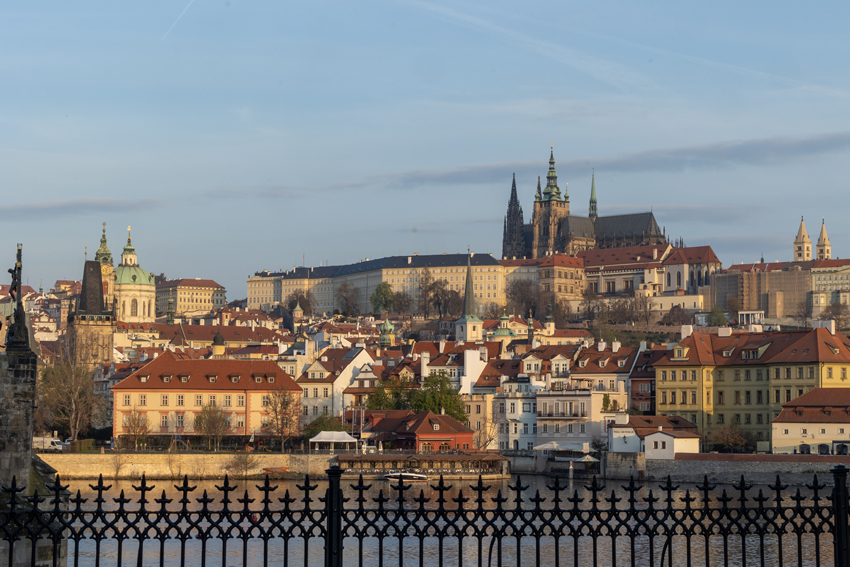Jetting off to eastern Europe over spring break, 39 from the Fresno Christian community embark on a journey through the cobblestone streets of whimsical Prague and Česky Krumlov, the grandeur of Vienna, the pearl of the Danube: the beauty of Budapest, and the historically-rich city of Kraków. History Teacher Kori James partnered with EF Student Tours to plan a customized adventure through some of the most intriguing and beautiful cities in Europe. This article is part of a student series highlighting their travel experiences.
The grandeur of European design proved to be a major culture shock for many who traveled to Prague, Vienna, Budapest, and Krakow. Modern and ancient buildings contrast with contemporary buildings in America.
Each city explored on the trip felt like stepping into a different chapter of history, with architecture that tells its own vivid stories. Prague, for instance, with its maze-like cobblestone streets and towering cathedrals, is a picturesque destination that should be on everyone’s bucket list. The Prague Castle—the largest ancient castle complex in the world—looms high over the city, with its spires being visible from anywhere in town.
Before heading to Vienna, the group stopped in Cesky Krumlov, a humble but gorgeous town that is a notable UNESCO site. The city could almost be described as a mini version of Prague, with similar cobblestone streets and a defining castle, but it proves to be a less touristy area. The castle is split by a grand arch that acts as a gateway to the city, leaving the travelers in awe before even entering.
In Vienna, elegance reigns supreme. The main shopping quarter, with its rows of designer stores tucked inside grand historic buildings, portrays the luxurious history of this city. Even a casual stroll through the town gives you something dashing to look at around every corner. Vienna’s rich imperial past feels alive and breathing, with Baroque ceilings and statues older than the entirety of America.
The hallmark building of Vienna is the Schönbrunn Palace, whose construction dates back to the 17th century. The opulent butter-yellow exterior catches the eye just as the leafy “Wilkonnen” arch comes into view. The palace was heavily inspired by Louis XIV’s Palace of Versailles, which was built only 30 years prior.
A quick stop on the way to the next country was another wonderful experience for the travelers. The capital of Slovakia, Bratislava, was a less populous but equally unique town that gave a much-needed sense of the calm, routine life of Europeans. Students were encouraged by their tour guide Ivan, to look at the statues which Bratislava is known for, and to observe the city’s architecture as well.
The Slovakian capital housed some impressive churches in its own right, including the Church of St. Elizabeth of Hungary, a quiet church in the city center.
The main city square is surrounded by buildings in Gothic, Baroque, and Renaissance aesthetics, including the Old Town Hall, which dates back to the 14th century.

Budapest, often called the “Paris of the East,” offers a different kind of magic. Headlining the city skyline is the Hungarian Parliament Building—a jaw-dropping Gothic Revivalist-style masterpiece perched along the Danube. The building’s endless arches, spires, and detailed sculptures look like something out of a fantasy novel.
As beautiful as the building is during the day, the golden hues that beam towards the “Buda” side of the city provide a once-in-a-lifetime viewing experience at night. Travelers had the opportunity to feast their eyes upon this building and much more on a grand cruise along the Danube River, as day faded into night. Junior Meghan Connolly was in awe viewing the city’s structures from the water.
“I thought that all of the buildings visible from the boat, not just the Parliament building, were honestly breathtaking,” Connolly said. “The intricate designs were something that we hardly ever see in America, so for that, I will never forget the architecture.”
Kraków, a city that wears its scars and beauty with equal pride, reveals resilience and creativity. Touring the Wiektczka Salt Mines just outside the city—hundreds of feet underground—feels like discovering a secret world. The miners of centuries past not only carved out tunnels and chambers but also sculpted incredible chapels and statues from the salt itself, which portrayed the ingenuity of the Polish people. The decorous chandeliers stunningly illuminate the deep catacombs, providing for an underrated experience compared to the grand cities above ground.
Travel offers much more than just photos and souvenirs; it ignites a desire to see more of the world, to better understand history, and to carry its beauty and lessons forward. Architecture is the main component in appreciating the experience, often being the first and most lasting impression of a place. From ancient cathedrals to modern skylines, buildings reflect the values, beliefs, and history of a culture. Traveling when you are young can leave you rich in not only experience but also knowledge of culture and new ideas that are exclusive to certain areas of the world.
For more from The Feather, read Opinion: Student shares perspective on visiting Auschwitz-Birkenau, or Student athletes meet mounting pressure.








